Wild Atlantic salmon operate like clockwork. In the fall, female salmon dig a nest for their eggs in gravelly riverbeds, and the small fry are born in the spring — wriggling out of sunset-coloured sacks into their new life. However, in the dead of winter in Nova Scotia, thousands of salmon eggs are about to hatch at an on land fish farm.
Located near the Bay of Fundy, the farm — Sustainable Blue — has operated since 2009. There’s irony in the teeming tanks of Atlantic salmon inside the operation’s walls: a few kilometres away is the fish’s natural home in the Atlantic Ocean, where numbers of wild fish are so low that you can no longer buy wild Atlantic salmon. A moratorium on the commercial Atlantic salmon fishery has been in effect since 2000.
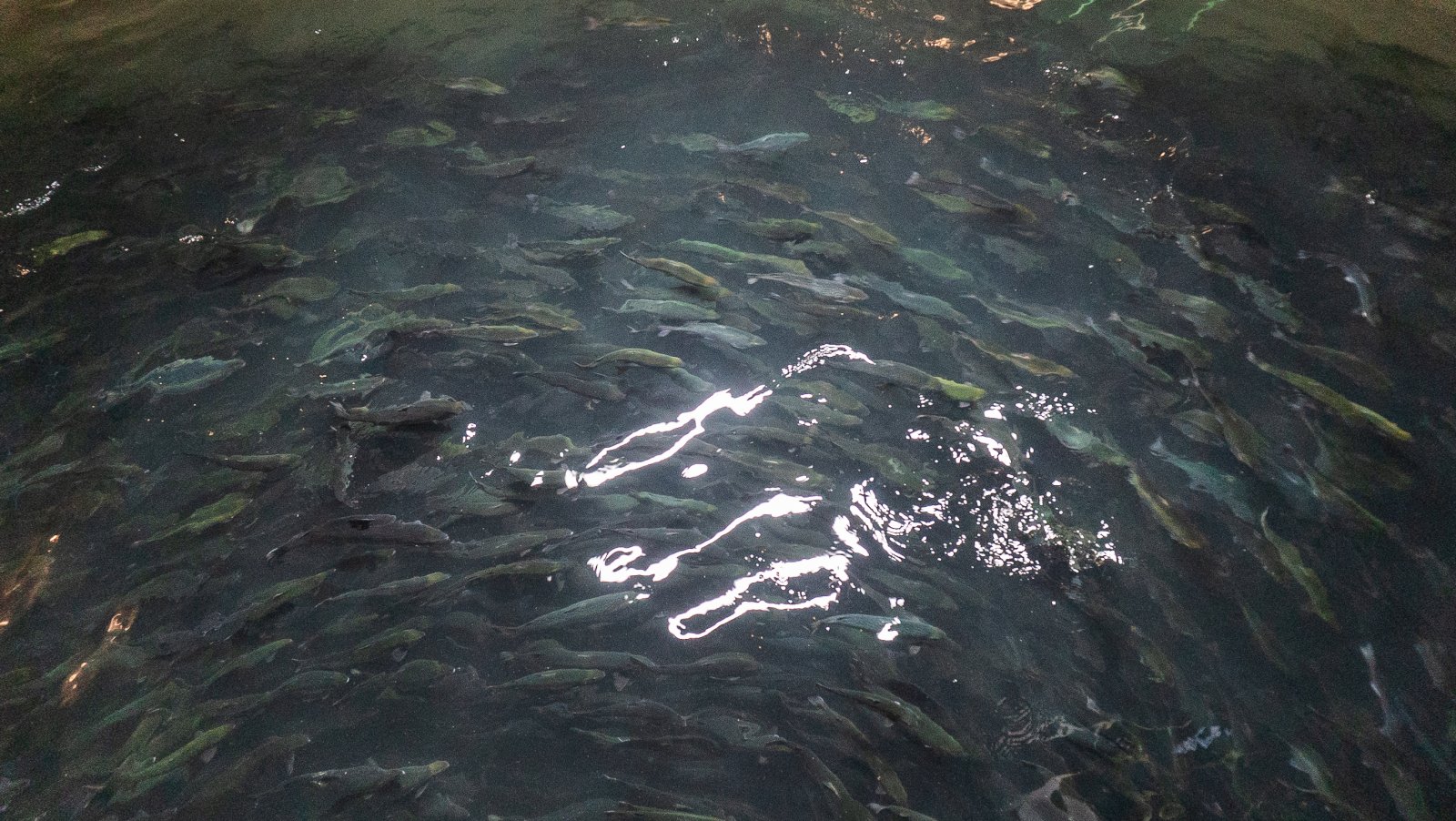
Critics of open-net pen salmon farming, which harms wild stocks, often point to on land salmon farming as an ecologically sound alternative to growing fish in the ocean. However, both types of farming face a mutual dilemma: the ecological toll of fish feed. In the case of salmon, which are carnivorous, smaller fish species are caught and turned into food, leading to widespread consequences for both marine life and people who rely on the smaller species for sustenance. However, Sustainable Blue is in the process of eliminating any ocean-based ingredient from its fish feed.
While these smaller fish are often classified as forage fish, 90 per cent of the 19 million tons of wild fish harvested each year to make fish food are considered food grade. That number represents about 20 per cent of all fish caught each year. Similar concerns abound in other parts of the food industry: the Earth Policy Institute estimates that 35 per cent of the world’s grain harvest goes towards animal feed.
Catching fish to feed other fish to feed people is an inherently inefficient process, explains Dean Bavington, a geography professor at Memorial University in Newfoundland. Importantly, he says, those fish are taken from places where people eat them. A stark example lies in Norway's aquaculture industry, which is “depriving up to [four] million people in [West Africa] of fish required to meet their annual nutritional needs,” found a recent report titled Blue Empire.
The fish species used in fish feed are viewed as lesser than salmon, as are other kinds of white fish like cod, which Bavington notes could be farmed on land and would have less of an impact than salmon on food security and the marine food chain.
“What we've created through agriculture is a way to take low-value species that are worth less — like these pelagic species like capelin, like herring, like anchovies off of Peru — and instead of people eating them, and them being cheap forms of protein, especially in West Africa … you're getting them transformed into fish meal and oil,” said Bavington.
“It then doesn't just get fed to other fish, it gets fed to farmed chickens, it gets fed to farmed pigs.”
Growing fish in Nova Scotia
The Atlantic salmon at Sustainable Blue, housed in tanks in different buildings depending on their maturity, splash out of the water when David Roberts turns on their feeder, which spins brown pellets into the tanks. The operation is one of few in Canada, where on land fish farming has not yet taken off.
Sustainable Blue feeds its fish a commercial salmon diet, but the “majority” comes from fish processing waste, like trimmings, explains Roberts, who is the chief sustainability officer at the company. However, Sustainable Blue is working to develop a fish food made from insects and other proteins with no connection to the ocean as part of a broader effort to make its operation have the least impact possible.
The plan is to feed the fish a diet made up of black soldier flies, fermented microalgae and small fish raised in flooded rice fields. The flies, which are unique to South America, have drawn attention as a fish food alternative in recent years because they’re cheap to raise, fast-growing and have a high protein content. Sustainable Blue has partnered with a Nova Scotia-based company growing the flies — Oberland Agriscience — which already produces pet food from the protein.
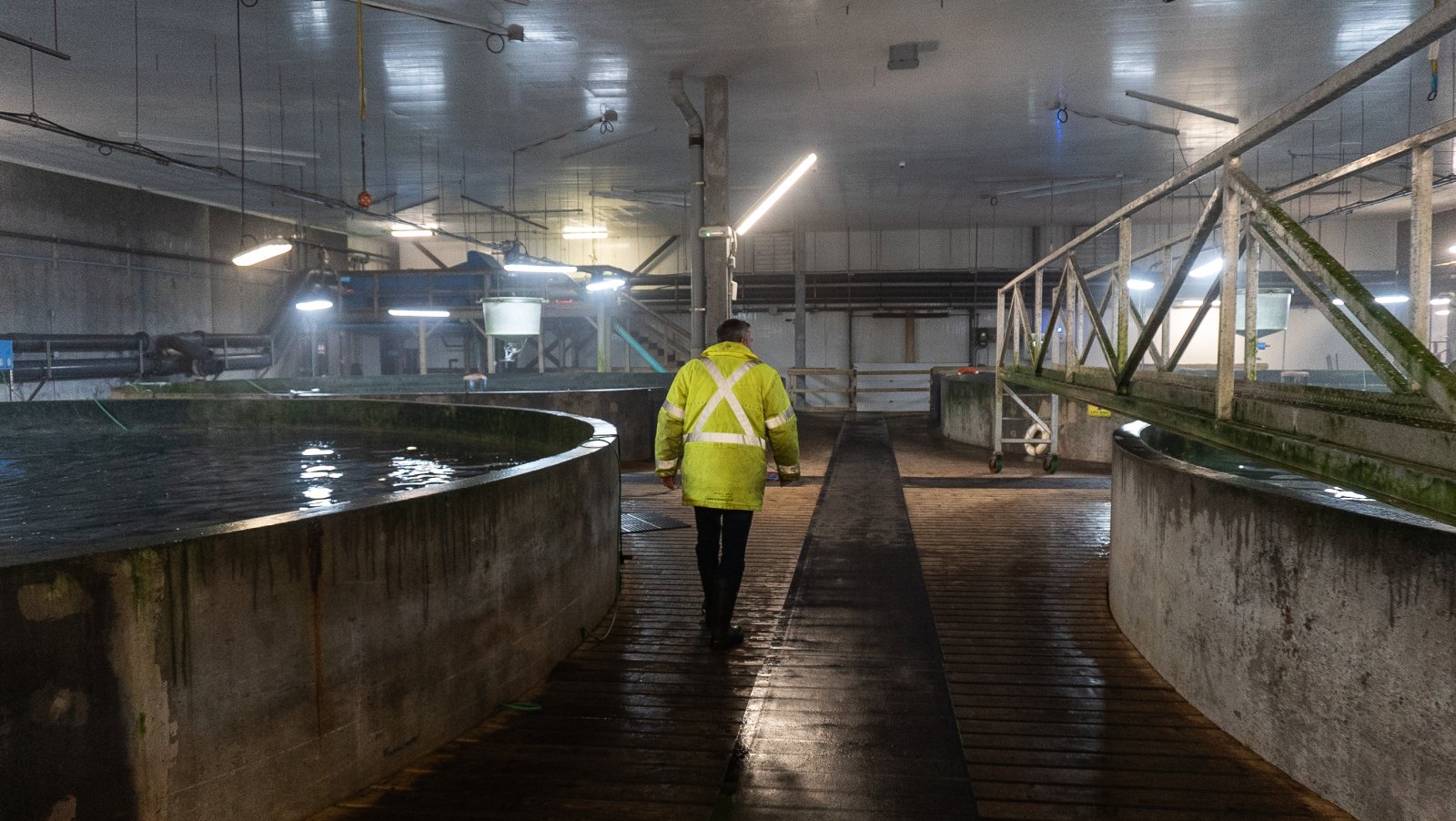
The algae is set to come from another local company, Smallfood, which will help supply the needed omega-3s required for a healthy salmon diet, explained Roberts. Thirdly, Sustainable Blue has been assessing a fish called pacu from Argentina and golden shiners from California, both a source of protein from rice fields. When rice is laid fallow, the fields are flooded, and the small fry produces nutrients for the soil while reducing methane-emitting bacteria. After about five months, when the farmers are ready to plant rice again, the fish can be harvested.
The company is in the final stages of creating the feed, which Roberts said they are “quite confident” will work well for Sustainable Blue's system: both in terms of feeding the salmon and not affecting the quality of their water. The next step would be to roll it out on a commercial scale for other producers.
“And we'll be free from the ocean,” he added
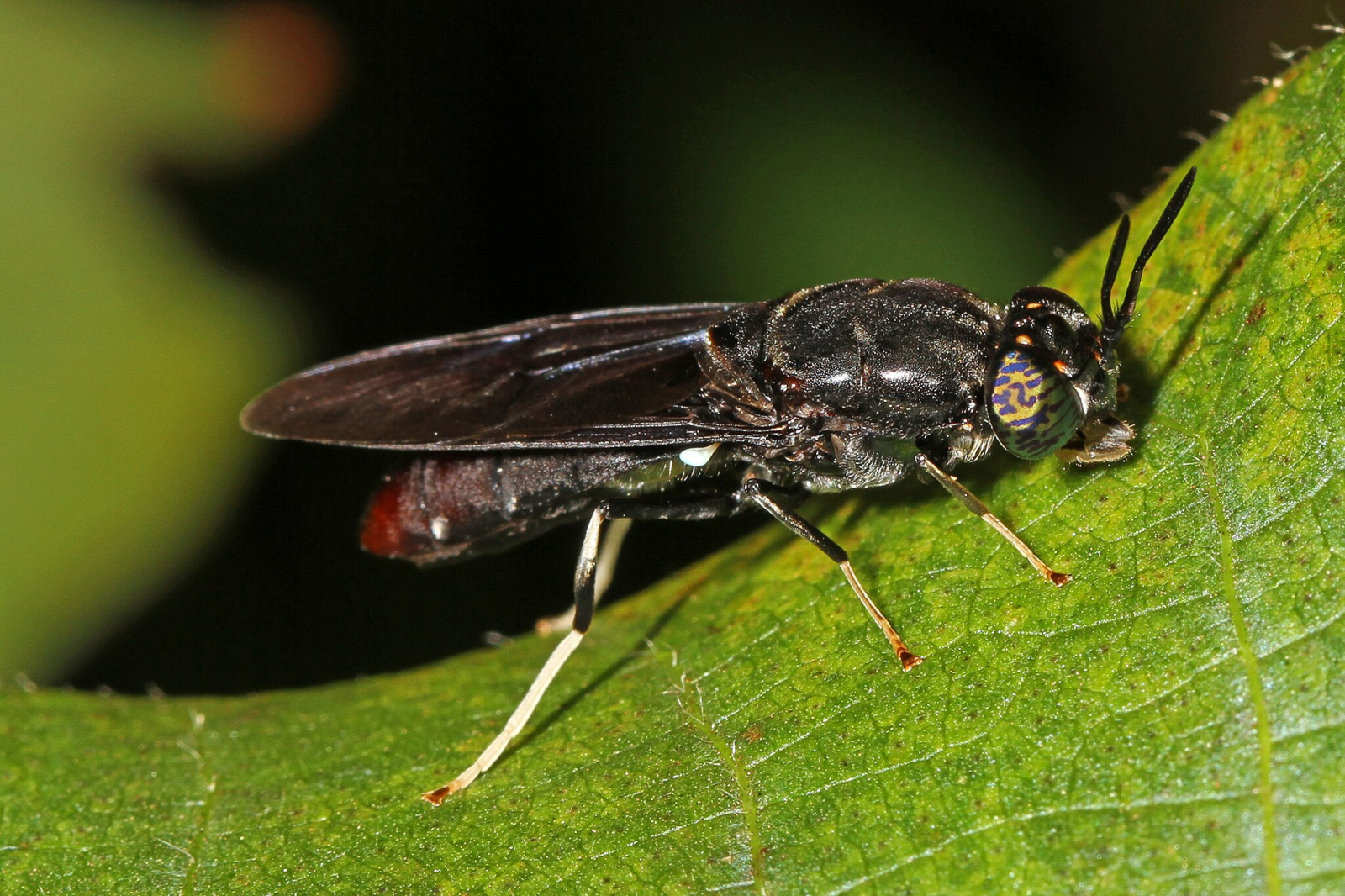
The company’s other sustainability efforts include a recirculating aquaculture system that is fully self-contained: water is recycled and cleaned of waste and then put back into the farm. Recirculating systems aren’t unique, but their waste filter systems are, Roberts said. Instead of producing wastewater that must be disposed of, their system separates the waste into a concentrated solid: the farm discharges no waste into the local of environment, unlike farms which funnel effluent into the ocean.
While Roberts said the system is both technologically and financially successful, he admits there have been challenges. An equipment failure in November killed 100,000 fish, which Roberts said was an isolated incident.
Even so, the state of Washington has signed a letter of intent with the company to bring its tech to the state, where nearly a quarter million escaped fish resulted in a ban on open-net pen Atlantic salmon farming.
Should we eat other farmed fish?
While Sustainable Blue is making strides to eliminate commercial salmon feed from its operations, fish farms all around the world currently rely on the feed to grow salmon on land and in the ocean.
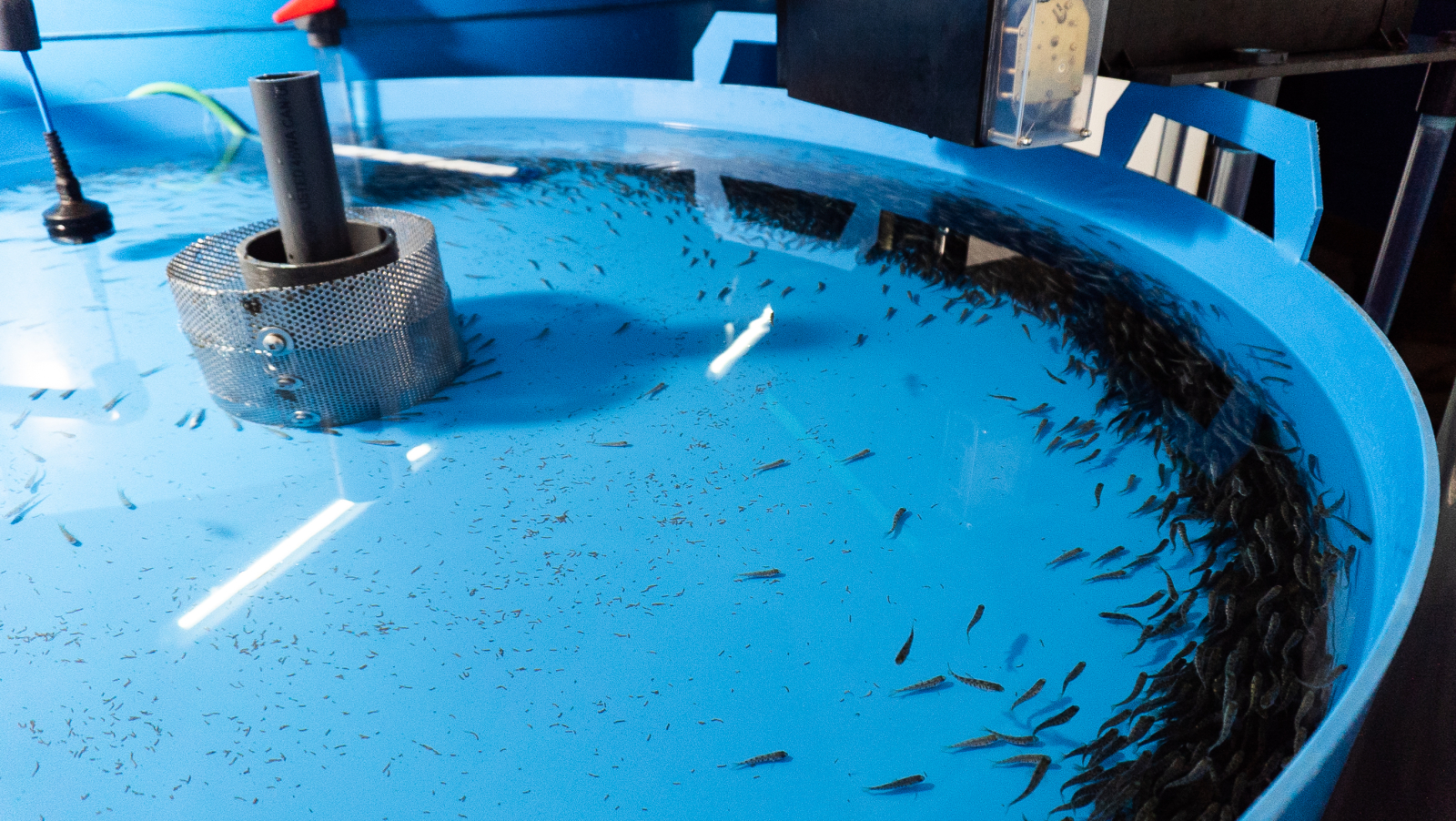
While on land farming is presented as a solution to the problems open-net pens bring to wild fish and local ecosystems, a hypothetical large-scale transition would have dire ecological impacts, said Bavington of Memorial University, who stresses that moving salmon farms on land doesn’t make the practice sustainable.
Not all fish are carnivorous, however, they’re typically worth less and are seen as less nutritious and desirable, he explains. In his book, Managed Annihilation: An Unnatural History of the Newfoundland Cod Collapse, he describes the province’s failed attempt at farming cod, which are omnivores.
“You're only domesticating profitable species. So, why is it that we don't have cod farms everywhere? The technology's there, but the cod, it was selling this past summer for 81 cents a pound,” he said. “Nobody wants it. It competes as a white fish commodity in the global seafood market.”
The idea of shifting what types of fish are farmed and how much salmon is consumed is also on the mind of Stan Proboszcz, senior scientist with the Watershed Watch Salmon Society. The mandate of the group is to protect wild salmon, so he stresses that getting open-net pens out of the water is key to rebuilding wild stocks. Warming waters from climate change, overfishing and habitat loss — which impact wild fish — are complex to address. But taking open-net pens out of the water is a clear-cut way to take stress off wild salmon, said Proboszcz.
However, Proboszcz said the transition from open-net pens in B.C. doesn’t need to be viewed as only a shift to on land fish farms. It could also look like bolstering industries other than fishing in coastal communities to replace job and economic loss from open-net pen closures.
And while the federal government has earmarked 2025 as the year the transition to land-based fish farms will occur, that would take a decade or so, explained Proboszcz, noting it’s more realistic to think of the land-based sector as a new industry rather than a transformation of the current one.
“It's not like that industry, the open-net industry, is going to transition into a land-based industry,” he said. “It's kind of like asking one of the big energy producers in Alberta to change the production of their energy from oil to wind farms.”
Part of the transition might also include eating less salmon, said Proboszcz.
“I think fish is a very healthy form of protein for us. But maybe salmon isn't the best species to farm, right? They're a carnivorous fish … it would be like, ‘Do we do we raise tigers for meat?’” he said.
“... Why not start focusing on farming tilapia? They're primarily herbivores.”
Updates and corrections
| Corrections policyThis article has been updated to clarify details about Sustainable Blue's feed and operation and to fix a caption that incorrectly described salmon fry swimming upstream.
The caption of one photo had
The caption of one photo had me wondering about which Escher-inspired universe we are talking about: "The facility attempts to mimic the natural world, where salmon swim upstream toward the ocean in the first part of their lives." Which ocean lies upstream of any river?
But, I did get wondering about nutrient cycles and noting that human biomass, at death, is generally removed from the nutrient cycle. I'm curious, therefore, of the potential benefit to the biosphere of returning our remains to that broader nutrient cycle rather than, say, pickling or rendering to ash.
The brief mention of cod being cheap (81¢ a pound) could do with some fleshing out; the referenced book could be quite interesting.
Capelin are not ‘worthless’;
Capelin are not ‘worthless’; they are delicious when salted and roasted on a Newfoundland beach.

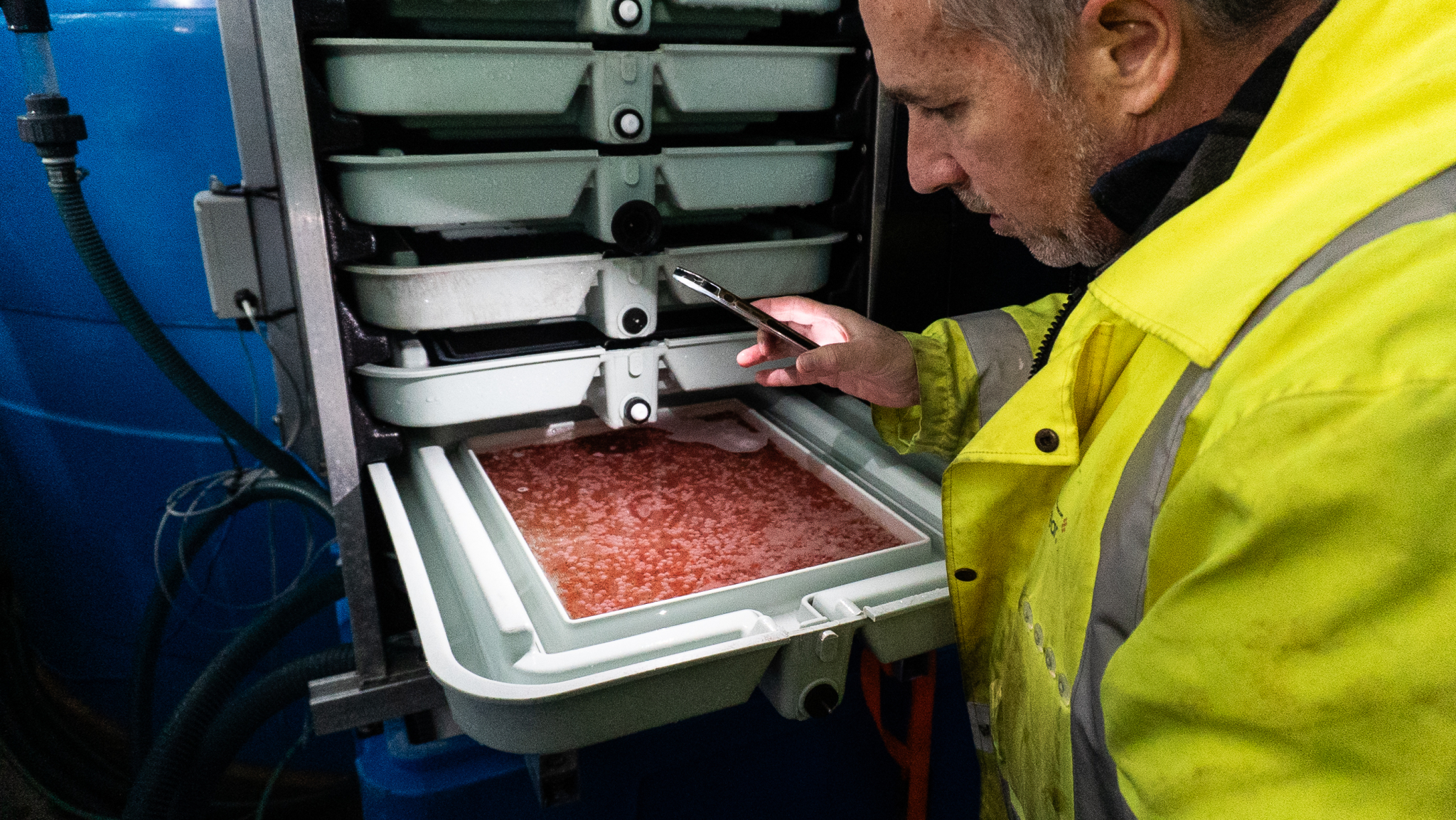


Comments